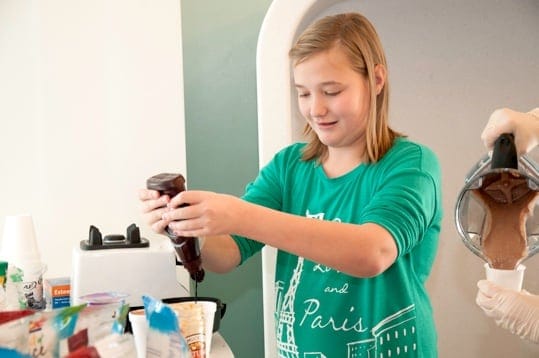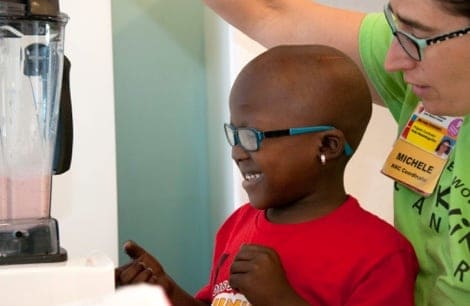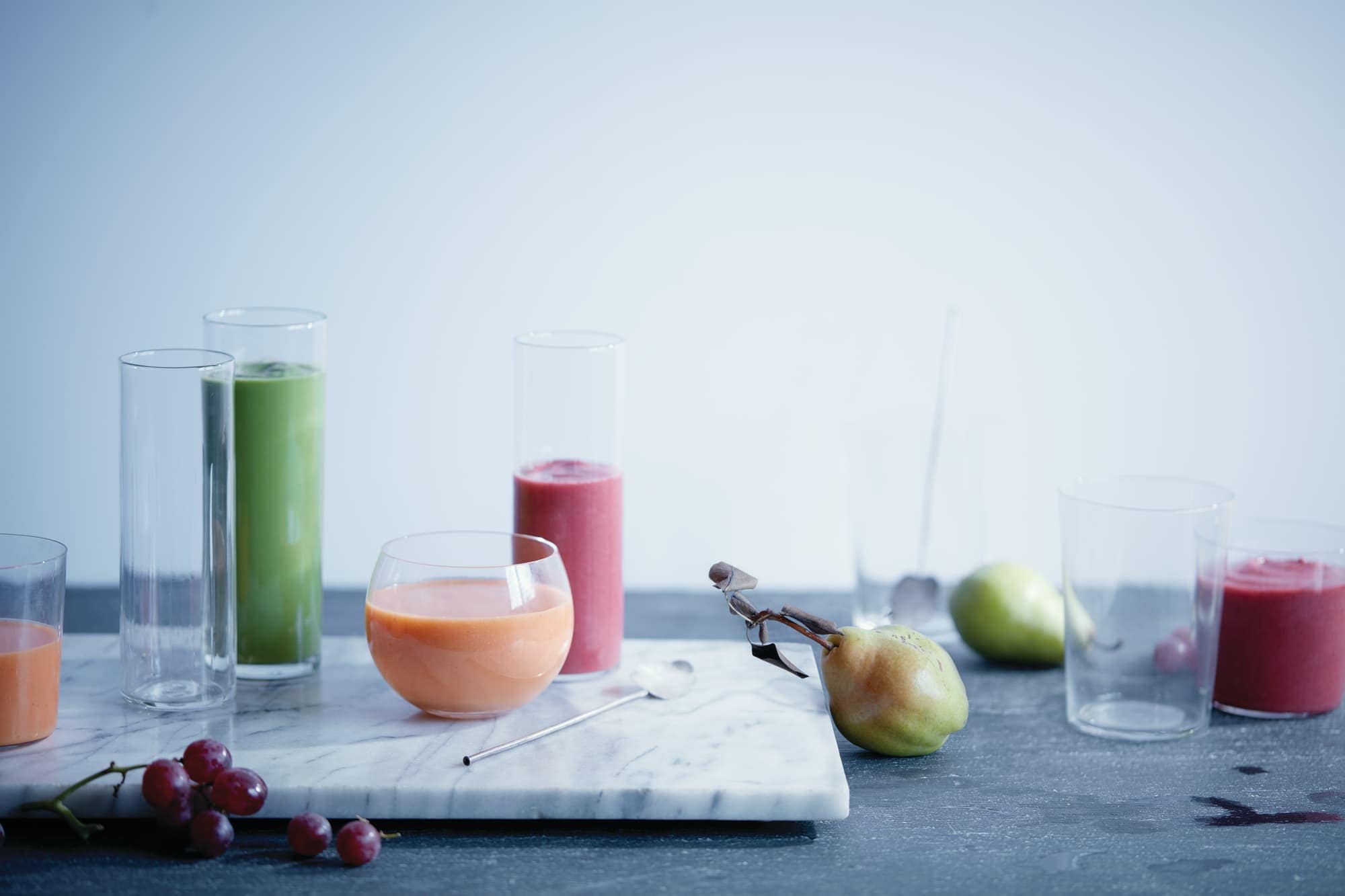Every week, a cart full of blueberries, strawberries, peaches, bananas, pineapple, yogurt, ice cream, juice, milk, peanut butter — and Vitamix Commercial blenders — makes its rounds through the hematology and oncology inpatient floor and outpatient clinic of University Hospitals Rainbow Babies & Children’s Hospital (UH Rainbow) in Cleveland.
When patients see the cart, they immediately know something special is happening: it’s smoothie day.
Smoothie day is one of a host of programs — which also include yoga, soccer, ultimate frisbee and cooking classes — that encourage kids undergoing treatment for cancer or blood disorders at UH Rainbow to lead an active, healthy lifestyle, even if they are currently battling an illness. Beyond physical health, the programs bring families together, and provide a pick-me-up for patients.
“Kids here are like kids everywhere else; they’re just going through a challenge right now,” said Michele Rothstein, program coordinator, Hematology and Oncology Division of UH Rainbow — who also happens to be the one pushing the smoothie cart. “Hopefully it’s the little things like smoothie day that bring a smile to their face and help them get through the day.”
But smoothie day at UH Rainbow is about more than spreading joy — it’s also about ensuring that kids facing life-threatening illness get critical nutrition.

It’s a challenge to get the kids to eat sometimes,” said Danielle Buchbinder, clinical dietitian for the Angie Fowler Adolescent and Young Adult Cancer Institute at UH Rainbow. “When you’re feeling terrible, the last thing you want to do is eat. Sometimes it’s easier to drink a smoothie or a shake than eat a meal.”
Beyond giving patients a nutrient-rich snack, Buchbinder uses smoothie day as a way to equip children and parents with the tools to achieve better nutrition. She offers suggestions to increase calorie intake, recommends healthy sources of protein, like peanut butter, Greek yogurt, or avocado (“it adds healthy fats and good calories, and you can’t even taste it”), provides solutions for lactose-free diets (berries and apple juice taste great), or offers ingredient ideas to mask the taste of nutritional supplements (ice cream and cookies help).
Smoothie day also gives patients at UH Rainbow a creative outlet — a way to try something new.
Young adults receiving treatment often show the most willingness to experiment with different flavors on smoothie day: venturing into ingredients like spinach, kiwi and green apple. However, the most popular flavor combinations are the more traditional strawberry-banana or chocolate-peanut butter-banana. Blueberry-chocolate is also a hit with young patients. Still, some opt for more unusual mash-ups, like peanut butter and pineapple.

It’s not unusual for kids at the hospital to also get involved in smoothie prep.
According to Rothstein, three- and four-year-olds like to make smoothies the most — and it’s easy for them to get involved. She will tell them, “push the switch up to the sky” to turn on the Vita-Prep 3. Kids can pick their own speed for blending, decide when their smoothie is done and then push the switch “down to the ground.”
In many cases, the effects of prepping and consuming smoothies take place far beyond smoothie day, encouraging habits that patients can adopt at home. “Families will say ‘maybe I can learn from you,’ or ‘we do this at home now,’” said Rothstein.
More importantly, events like smoothie day convey something critical to children undergoing treatment for cancer or blood disorders, and to their families. “It’s not all dark,” said Rothstein. “There are still good things — connecting and making a friend, enjoying a delicious smoothie, getting to feel like yourself again. You’re still you.”
Smoothie Day at UH Rainbow is generously funded by the Steven G AYA Cancer Research Fund. To learn more about University Hospitals Rainbow Babies & Children’s Hospital’s programs to promote healthy living for children with cancer, click here.
Related Articles

5 Creative Ideas for Food Prep with Your Kids
Children love to help, especially in the kitchen, and a child who helps you prepare a dish is much more likely to try it. Make an adventure out of trying new foods, and enjoy these ideas that will take your young chef from breakfast to bedtime.

Creating a Balanced Diet for Kids: Tips and Tricks to Help
Creating a balanced diet for kids can be challenging. Here are some tips and ideas on how to incorporate healthy foods into your kids' meals.

Baby Food Recipes
Discover just how easy it is to make fresh, homemade baby food.
